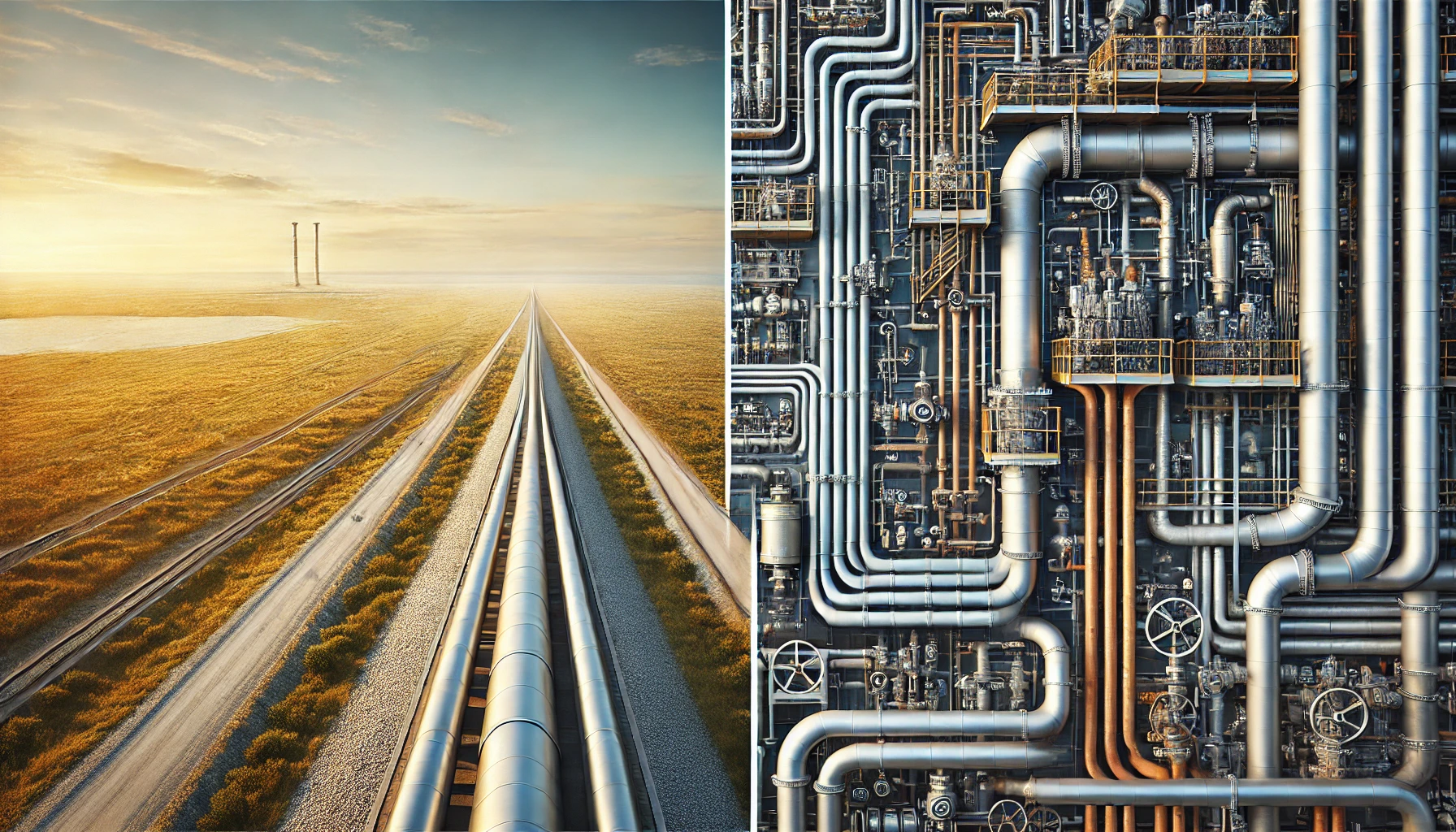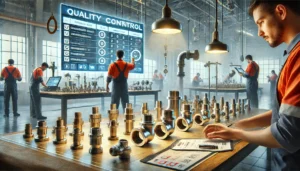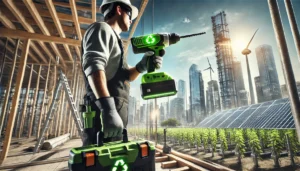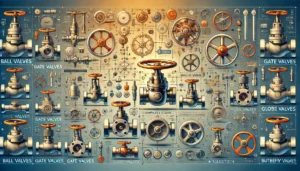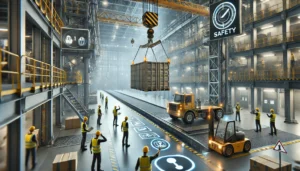Pipelines and piping systems are important for transporting fluids and gas but their functions and challenges are quite different, for instance while pipelines are used across long distances, piping systems are used internally in an industrial facility and thus have their own set of design, construction and maintenance challenges.The systems have been designed, constructed and maintained in the following ways:
Pipelines
Designing complexities
Long-distance transportation of fluids or gases is what pipelines have been designed for throughout history, with ranges of about hundreds, if not thousands, of kilometers. Engineers have to factor in varied terrains including but not limited to mountains, deserts, rivers, and most challenging subsea. These subsea environments are not easy to engage with, and to put it more clearly, subsea pipelines require high durable material and stronger steel in order to resist high amounts of external pressure and saltwater corrosion.
Another key consideration in the design of the pipeline is its hydraulic performance. In order to manage efficient flow along the pipeline system, effective and precise modeling is critical, particularly when estimating the hitting point over long distances. At the same time, in the pipeline system which endures numerous cutting across countries, stamping is time-consuming and extremely important in designing.
Difficulties in Construction
A great deal of logistics management is required for the construction of pipelines because to their length and geographic spread. Large areas of land to be cleared, heavy materials to be hauled, and specialist equipment for welding and installing pipeline sections are much used. Coming further out, there are problems such as harsh climates and unreachable terrains that catch up in the pipeline construction.
The task of laying subsea pipelines also comes with challenges since it involves using ROV’s (remotely operated vehicles) and precision welding to fit them in which involves dealing with extreme vertical and corrosive pressures. Pipelines construction are further complicated by environmental issues such as dealing with ecosystem interference while doing construction.
Maintenance Issues
The large size and remote locations of pipelines make them more difficult to maintain. In finding leaks, corrosion or structural flaws, modern methods using smart pigs, drones or fibre optic sensors are standard practice. Restorations for instance on subsea pipelines can be exorbitantly expensive and require highly ranked teams with the right gear.
Lastly leakage detection greatly aids in improving pipeline safety. As more and more technologies like the Acoustic sensor and the real time pressure monitoring system come into the picture it has been found out places the norm real emphasis is catching out the anomalies during the distance.
Piping Systems
Engineering Challenges
Piping systems are only present in locations such as refineries, chemical plants, or power stations. They carry fluids such as steam, through pipes, corrosive chemicals, and low temp gases, hence, proper materials have to be chosen and a proper design has to be made. There must be a workaround as other systems and equipment may occupy the limited space within a facility.
Thermal expansion, vibration, and dynamic loads are the primary stresses that are experienced within a piping system; this makes stress analysis a crucial step. Moreover, the incorporation of any control element such as valves, flow meters, and others makes the situation even worse as they have to be installed in very specific locations to work properly.
Construction Issues
Fabrication of piping systems in industrial buildings and industries is a delicate operation. Hence, a few of the sections have to be assembled outside the facility and then brought in as a single unit. Even the slightest misalignment of any structural part could interfere with other built systems. Construction divisions choose to install pieces in a certain order to avoid colliding with existing equipment.
At all constructions sites around the world, if the premises are already in use, safety is the first zone. Construction workers need to compete with existing processes, meaning that they have to be as little intrusive as possible, this leads to them having to follow certain outlines as well as ensuring that installations do not interfere with production.
Maintenance Complexities
Several concerns belong in the cross hairs of maintenance and control in a piping system as they fall within the hinterland of industry- which, to an extent, are factors of a hostile and top-tier environment. The maintenance approach regularly calls for assigning plant resources to the replacement of worn valves, flanges or joints amid partial operations resulting to financial cuts while plugging in at the bare minimum scaling, thermal or perhaps the more troublesome corrosion.
Additionally, and after the interrelationship of all the beginning concerns, a pipings pose further maintenance issues by dense and intricate systems that are unlikely to be found on the lower tier of the order. This in itself targets the lower tier of the target as maintenance in these situations is exceedingly resource demanding both time and labor in not just opening but closing the respective parts.
Conclusion
The position of spokes will heavily depend on what is the goal, as both pipelines and a piping system are the focal points of a general operation in industries. From a broad perspective, a crossover section is bound to have an order of working or planning or even the resultant that is larger than a cylinder. A piping system on the other hand has the nuance of requiring focus and vast resources that are valued ironically in smaller units.
As long as the planning is intact, along with the engineering and the so-called magic formula, it would become clear that safe movement of fluids although persistent can be cumbersome in terms of its intricacy when recognition of which from two poses more challenges is to be considered dependent on the target.

